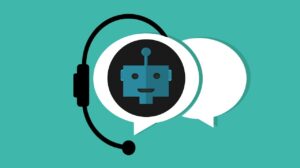Any data scientist building an Artificial Intelligence (AI) or Machine Learning (ML) based model will require a huge amount of labeled data befitting the model training requirements. This is where data annotation comes in, making information understandable to machines. Data annotation, in this case, refers to the task of making the data in different formats such as audio, images, texts, and videos recognizable to machines.
In this blog, you are going to learn:
- What data annotation is and what role it plays in Machine Learning
- The available fields of Artificial Intelligence
- Who data labelers are and what they do
- Whether there is an alternative for the role data labelers
- The overall benefits of data labeling
What exactly is data annotation and what role does it play in ML?
Data annotation is synonymous with data labelling, which is the process that revolves around adding tags to a dataset when preparing to train an ML model. Annotated data simplifies the training process as it teaches the AI to recognize patterns. When the training process ends, any new data, unlabeled data added will automatically lead to predictable tags. In other words, AI or ML models learn through examples, meaning data labelers add labels or tags to a dataset and set a target. When the image annotation period ends, for example, the machine can easily spot the presence of a ‘traffic light’, ‘dumpster’ ‘person’ or a ‘car’ in the new images. In addition, trained ML models can be deployed in complex forecasting assignments like stock market price predictions or give suggestions for additional products and services for a customer.
That explains why data annotation is critical during the data preprocessing stage due to the fact that supervised ML models learn to ‘remember’ recurring patterns in labeled data. The logic is simple. After an ML algorithm has processed sufficient annotated data, it begins to recognize similar patterns when new, unlabeled data is presented. That is the reason as to why data annotators are advised to use clean, annotated data when training their ML models.
What are the fields of AI?
Data annotation is used for any data type, including audio, images, text, and videos. However, there are two main fields of AI that are used regularly, and include: Computer Vision (CV); mainly used for image and video annotation, and Natural Language Processing (NLP); used to annotate audio and text data. Below is a brief look at these two common fields:
Computer Vision
A single, still image is more effective in conveying information than a lot of words. This is one of the reasons as to why data scientists teach machines to understand visual data. Humans understand with ease information shared through images and videos but that is never the case for machines. For a machine to be able to understand and interpret an image or a video as we do, it needs to learn from thousands of pieces of the same content. For that to happen, human annotators use annotation types like bounding boxes and polygons to identify an object, define its shape, and also track its position in space. That is how CV works in image and video annotation.
Natural Language Processing
NLP is used exclusively in audio and text annotation, basically explaining the language people use to machines. While people have the ability to communicate in native languages, machines communicate in artificial computer languages. However, through audio and text annotation, machines learn to identify different meanings. An easier example is how audios are transcribed into texts. However, a more complex example is how machines are able to carry out intent and sentimental analysis in audio and text data. In the latter case, machines determine the mood the text has and what objective the author of the text has.
Who are data labelers and what do they do?
Now you know what data labeling is and why it is significant in ML, and also the common fields in AI. It is imperative to understand that the brain behind all this process is the data labeler, a human expert who manually arranges and annotates the data by tagging labels to each piece.
The work of data labelers cannot be underestimated. As aforementioned, labeled datasets are used in supervised ML models, thus, human supervision is basically a human labeler helping the machine during the training process. Note that human supervision is paramount because machines are not as capable as we are, and they need human effort. For instance, voice recognition is a simple process that even our babies can do quite efficiently.
But for machines to discern different voices of people, a lot of training needs to be done. And that explains why human annotation is pivotal in the training ML models.
Can human labelers be replaced?
This is always an intelligent question to ask because there is a human factor to consider, and certainly there is a downside to human annotation. Of course, a machine can do a great labeling job at a lesser expense than humans, but there is no evidence yet as to why using such efficient tools is more advantageous than human labelers. Moreover, it is all about finding the right data labeling process for your ML project, and in this case, human labelers are more effective. And to avoid putting too much pressure on your technical team, and on budget, outsourcing or crowdsourcing your project to a professional data label center is always a good strategy.
Benefits of data labeling
There are numerous benefits to reap from data labeling to ML algorithms that are responsible for training data. Here are some of the benefits from this process:
Improves the accuracy of data
Whenever data is labeled to train a ML model, the accuracy is always high. The end result of this high accuracy is good performance from the ML solution, producing the desired output for the users.
Better user experience
The more accurate and quality data is used in ML algorithms, the more enhanced the use experience becomes. For example, chatbots’ ability to give accurate answers to end users is as a result of ML-based trained AI models.
Better quality training data
The quality of training data can be improved with advanced data labeling methods through an interactive way after human correction. In any case, the quality of training data determines the overall performance of the ML model.
Conclusion
To sum up, you now understand that the output of a ML model is as good as the quality of data used to train them. High-quality datasets produce top-performing ML models; and thus, crowdsourcing or outsourcing the services of human data labelers is the recommended way for your ML project. At the end of the day, we all want better end user experience and better outcomes from our projects, don’t we?





